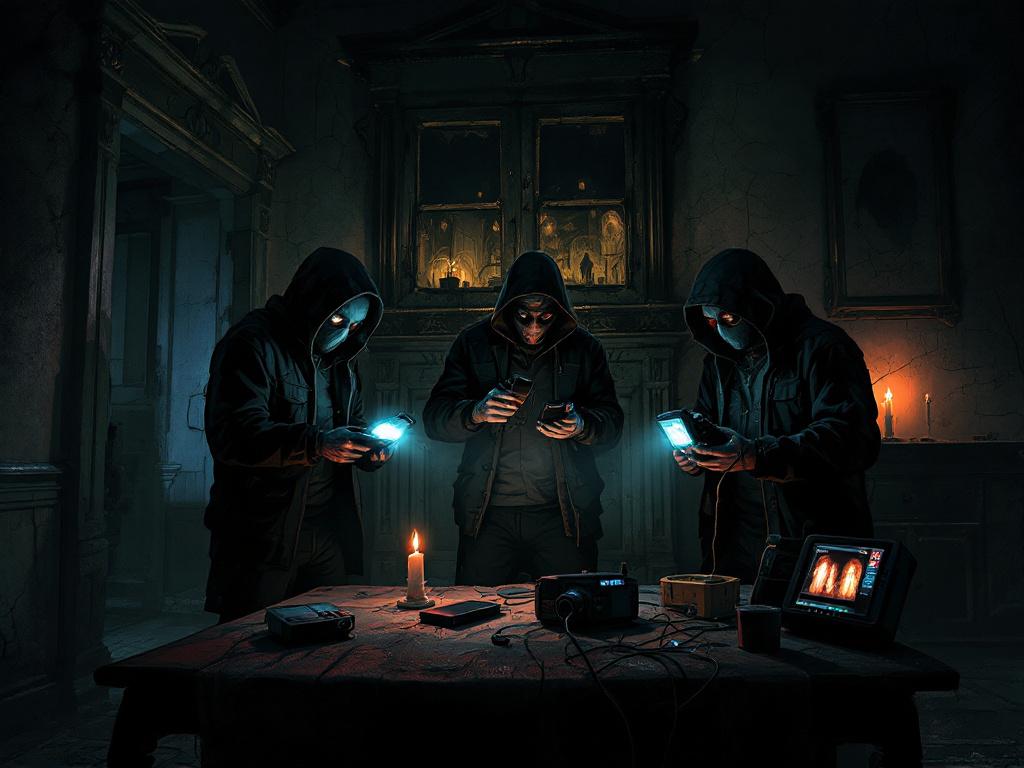👻Between science and superstition: the nocturnal life of ghost hunters
I must confess: ghosts and the paranormal have always captivated me.
Although I favour a logical and scientific approach to unexplained phenomena, I cannot — and do not want to — deny the magnetism they hold over me. Maybe it’s mere curiosity, or perhaps that subtle pull toward what we cannot fully grasp.
After all, I’m still human, immersed in a reality far larger than what I can perceive.
As a child, during the long summer evenings at my family’s large villa, mystery was part of the play. With my siblings and cousins we invented a thousand stories and adventures as dusk fell. When night descended and the vast garden filled with shadows, the whisper of the wind among the trees was enough to send chills down our spines. Perhaps that’s where it all began: that faint shiver that still drives me today to seek answers between light and darkness.
We might imagine them as figures in trench coats equipped with crosses and recorders, or immediately picture the protagonists of Ghostbusters or Paranormal Activity.
But the ghost hunters are real—and they don’t wear proton packs. They roam the night in silence, through abandoned mansions, disused asylums and castles heavy with legend. They search for proof of the paranormal—or at least for clues that something beyond reason might exist.
🕯️ The origins of ghost hunting
The phenomenon of the ghost hunter did not begin with TV—it goes much deeper.
Back in the nineteenth century, during the era of spiritualism, séance rooms and spirit photography filled European salons. In England in 1882 the Society for Psychical Research was founded—the first organisation dedicated to investigating the paranormal with, for the time, a scientific method.
Since then, the fascination with the invisible has never faded: each generation has had its investigators of the beyond, from Victorian scholars to modern teams armed with EMF meters and infrared cameras.
📡 The tools of ghost hunters
Today, ghost hunting moves between science and suggestion. Research groups use a variety of instruments to detect environmental anomalies that may indicate spiritual presences.
Here are some of the most common:
-
K-II Meter: measures fluctuations in electromagnetic fields.
-
Digital recorders (EVP): to capture voices or sounds inaudible to the human ear.
-
Infrared cameras and thermal imaging: identify figures or cold zones.
-
Spirit Box: a radio scanner producing fragments of words attributed to “messages from the dead”.
All of this, wrapped in darkness, silence, and a palpable tension that—even without ghosts—is enough to send a shiver down your spine.
🏚️ The most haunted locations in the world (and Italy)
Every ghost hunter dreams of spending a night in a cursed place.
Among the most famous in the world: the Winchester Mystery House in California, Edinburgh Castle in Scotland, and the notorious Eastern State Penitentiary in Philadelphia.
In Italy, we are no less haunted: people speak of sightings at Montebello Castle (RN)—where the ghost of Azzurrina is said to wander—or in the corridors of Volterra Sanatorium, the focus of multiple paranormal investigations.
Many of these stories originate from local legends, others from suggestive coincidences—but they all share one feature: the impossibility of fully denying them.
🔦 The boundary between reality and belief
Despite growing curiosity and TV shows like Ghost Hunters International or Most Haunted, the scientific community remains skeptical.
The anomalies recorded by ghost hunters—voices, images, thermal changes—almost always find natural explanations: radio interference, drafts, perceptual illusions.
Yet the fascination with the investigation remains intact. Because even if they don’t catch ghosts, ghost hunters capture stories, and give voice to what humans fear most: the unknown after death.
🕰️ Beyond the myth
Perhaps we will never know if ghosts really exist.
But those who seek them don’t always do so out of fear or morbid curiosity. Many ghost hunters admit they do it to reconnect with a lost past, or to make sense of a pain left hanging.
In the end, searching for the dead is just a way to feel alive.
✦ Conclusion
Ghost hunters are the archaeologists of the invisible: they explore places, memories and fears, chasing echoes that science cannot yet explain.
Perhaps ghosts are nothing more than the traces of our need to believe—and ghost hunters, with their tools and their persistence, are the modern guardians of that fragile boundary between what is real and what is only… spirit. 👁️🕯️






